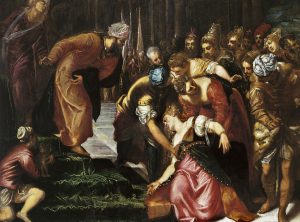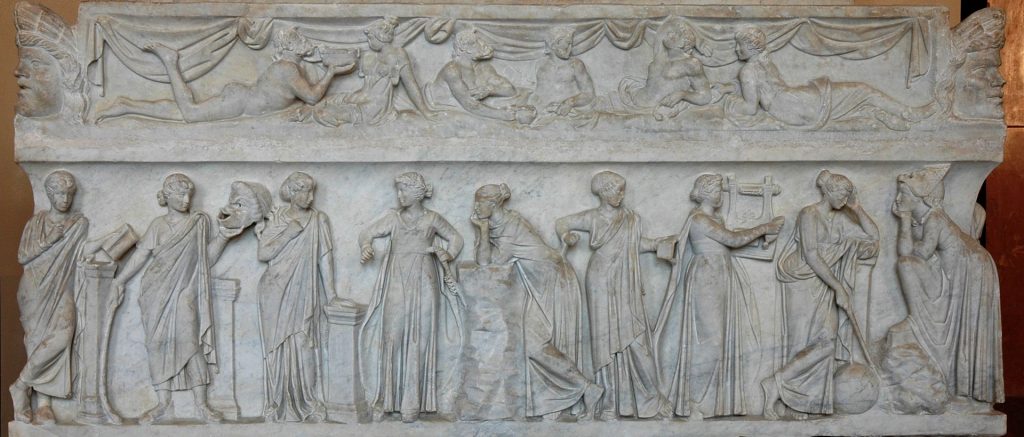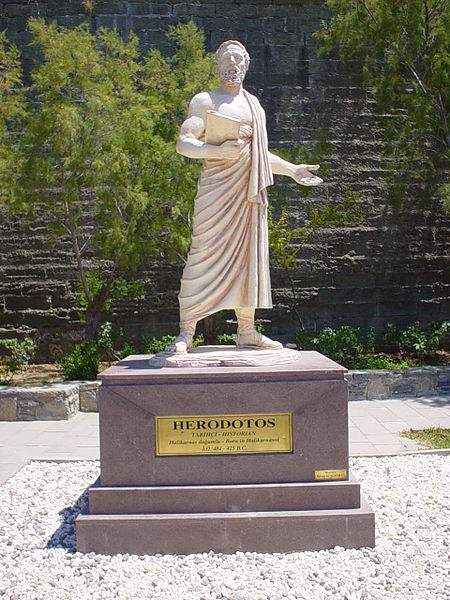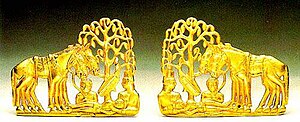Following is my own elaboration of Pervo’s introduction to a discussion of ancient historical novels. My Stadter citations are independent of Pervo’s book. I do not refer to Acts in this post. Others can think through the comparisons. But will discuss a few more historical novels before returning to Acts.
The Cyropaedia by Xenophon – the first historical novel
The author Xenophon, ca 400 b.c.e., wrote histories of Greek wars (Hellenica) and of his expedition in the Persian empire (Anabasis). Some of his works have been translated as modern Penguin classics and all can be found online.
He also wrote “a historical biography” of the Persian king Cyrus. In this account we read of historical characters who at times are true to known historical actions. The Cyropaedia reads like history.
He begins by explaining how careful he was to research his facts:
Believing this man to be deserving of all admiration, we have therefore investigated who he was in his origin, what natural endowments he possessed, and what sort of education he had enjoyed, that he so greatly excelled in governing men. Accordingly, what we have found out or think we know concerning him we shall now endeavour to present. (From the Perseus Project text.)
That sounds impressive and reassuring enough to a first time reader.
But Philip Stadter (Fictional Narrative in the Cyropaideia) compares this research-statement by Xenophon with others written by Herodotus and Thucydides (p.462):
Herodotus
- noted his desire to preserve and understand the past
- gave a sample of the oral traditions upon which he would draw
- claimed he would start from what he himself knew, showing no partiality
Thucydides
- stressed the analytical and investigatory effort needed to get to the truth
- presented a schematic example of his mode of inquiry by analyzing the growth of unified action and maritime power re the Trojan War
Contrast Xenophon
- makes no overt claim to factual accuracy
- no statement on the difficulties of ascertaining the truth in a distant time and country
- no allusions to the weaknesses of memory or the reliability of informants
Stadter writes:
In telling his story, Xenophon composed the first extant novel, and demonstrated the power and flexibility of fictional prose narrative. His work is heavily influenced by earlier narrative in poetry and prose, and yet developed new possibilities and emphases. (p.461)
The Cyropedia was an ancient historical novel.
Xenophon does on occasion accurately preserve customs – such as wearing high-soled shoes – or names, at least within the limitations of his own knowledge. But these items are subservient to the narrative, the source of which is Xenophon’s invention, not historical tradition or research. . . .
Xenophon shapes a story of Cyrus which is composed of dialogues that were never spoken, battles that never took place, and people summoned and dismissed from the written page without any shadow of historical reality. . . .
The creation and selection of narrative episodes, the temporal and geographical framework in which they are set, and the mode in which the reader is expected to respond are fictional. (p.463-4)
The purpose of this historical novel? To teach readers the principles of an ideal government and the qualities of an ideal ruler.
Yet as Stadter points out, the reader is assured from the beginning that the story is based on the author’s diligent enquiries into the facts. It is not until one reads “some 21 pages” of unrelenting success stories that one begins to dsicern the fictional nature of the work. (Stadter, p.462). Not that any one story is incredible on its own, but it is the steady avalanching of success stories that eventually collapses under its own weight, at least in the minds of savvy readers.
Ancients recognized its fictional character.
Cicero wrote:
Take the case of the famous Cyrus, portrayed by Xenophon, not as an historical character, but as a model of righteous government, the serious dignity of whose character is represented by that philosopher as combined with a peculiar courtesy. (Letter to Quintus)
In Diogenes Laertius we read:
Then, too, the one wrote the Cyropaedia and the other a book on Politics ; and Plato in his Laws says, that the Cyropaedia is a mere romance, for that Cyrus was not such a person as he is described in that book.
Richard Pervo (Profit with Delight, p.177) adds a third citation, the letter to Pompey 4 by Dionysius of Halicarnassus, to the same effect.
The power of the historical novel format
Stadter lists the following advantages (not necessarily his words) of the narrative format:
- A long narrative is an effective way to convey complicated information or concepts.
- Narrative also permits the interweaving of a number of themes.
- Narrative replicates the human experience of “one durn thing after another”, creating a vivid sense of reality in the telling of each piece of information.
- Narratives are a form of teaching by example rather than abstract precepts or summary statements, and thus naturally more memorable and even plausible.
- If the events are credible, the reader may accept them as possible. If the events are contrary to common experience, the reader will either place them in a distant time and place (e.g. The Odyssey) or treat them as allegory or parable (e.g. Aesop’s fables). Either way, narrative is persuasive by its nature.
- Narratives (good ones) are enjoyable, and listeners generally want to hear more.
- Narratives are memorable. The lessons or messages they convey are easily recalled.
One can add three points to Stadter’s list the value of historical fiction:
- added verisimilitude
- added verisimilitude
- added verisimilitude
Recall how all the more enthralled we were as children when a fairy tale ended with words like, “And we know this really happened because you can see to this very day . . . ”
That eternally persuasive “historically-true” story of Atlantis
Pervo does not discuss Plato’s story of Atlantis but Stadter helpfully brings it in to the discussion.
The history of Atlantis is a fictional morality tale within a larger work by Plato, Timaeus. But it has taken a life of its own, as everyone knows. Most of us treat the story as a fable. But that was not how it is introduced, and those people today who believe it was real have a good case, at least by the standards often set out for believing the historicity of ancient writings accepted into religious canons.
Plato goes to great pains to explain through Critias how he carefully he decided to introduce the story in the first place, since his concern was to get the true details right in his own mind before expounding it. For though it might be seen as a quite extraordinary story, it nonetheless definitely “was true”. To remove any doubt from readers’ minds Plato writes that
- the story is actually documented by custodians — in Egypt — who can be trusted to preserve such records
- the story was passed on via a chain of highly reputable and credible named witnesses
- these witnesses took pains to be sure they got the story exactly right and passed it on without deviation
- the transmitters were conscious of the risk of normal memory lapses so took specified preventive measures to minimize this risk
Plato insisted in his writing through his characters that the story was definitely and without a shadow of doubt true and factual. An abundance of references to what appear to be the records of eyewitness details follow.
And many remain persuaded even today. And many more, though not persuaded, are open to wondering if maybe there was some truth to it after all. And it all started with Plato’s simulation of history — his mini historical novel within Timaeus.
Such is the power of a narrative that reads like history.
Like this:
Like Loading...
 Maybe it’s just me and the particular apologists I have encountered over the years, but I seem to have run into a claim that the authors of the canonical gospels found themselves moved to write about Jesus in a completely new literary genre that we call “the gospels”. The four gospels certainly are unlike other types of ancient historical and biographical writings from the Greco-Roman world, and many of us are well aware that a number of scholars have attempted to demonstrate that they nonetheless do conform to an ancient type of writing that approximates our understanding of biography, that is, a Life, or bios. We have argued here that such efforts are problematic and pointed out that not all scholars specializing in the genre of the gospels agree.
Maybe it’s just me and the particular apologists I have encountered over the years, but I seem to have run into a claim that the authors of the canonical gospels found themselves moved to write about Jesus in a completely new literary genre that we call “the gospels”. The four gospels certainly are unlike other types of ancient historical and biographical writings from the Greco-Roman world, and many of us are well aware that a number of scholars have attempted to demonstrate that they nonetheless do conform to an ancient type of writing that approximates our understanding of biography, that is, a Life, or bios. We have argued here that such efforts are problematic and pointed out that not all scholars specializing in the genre of the gospels agree.



